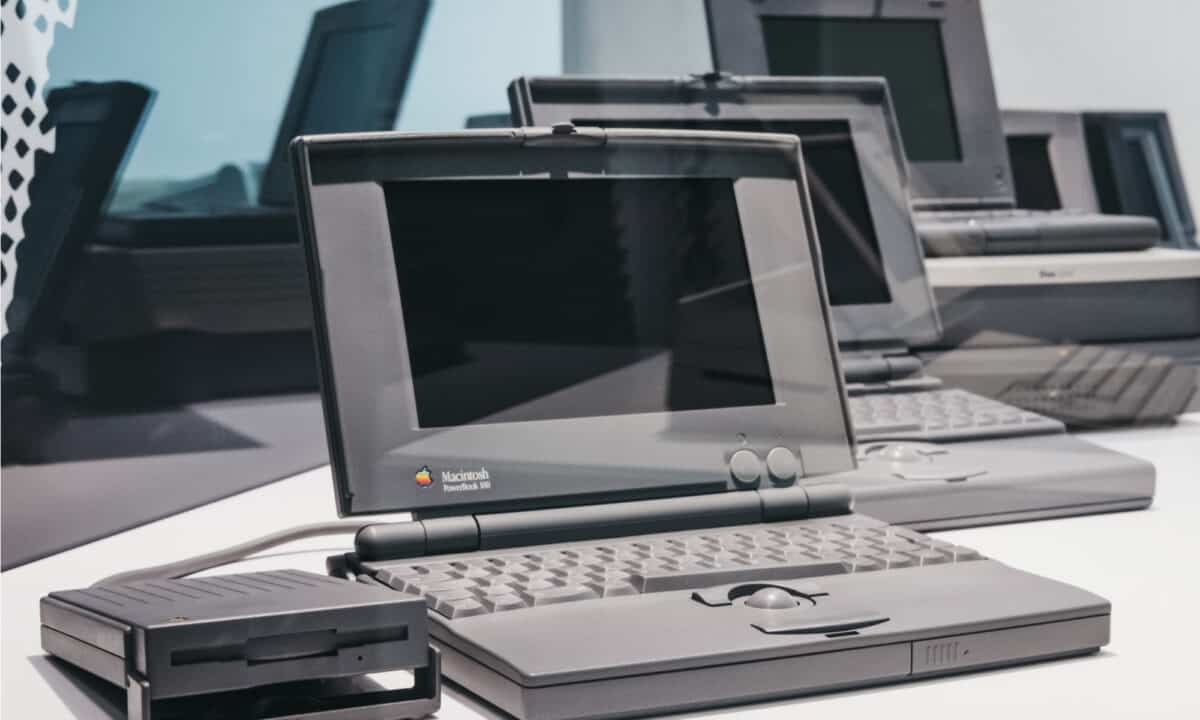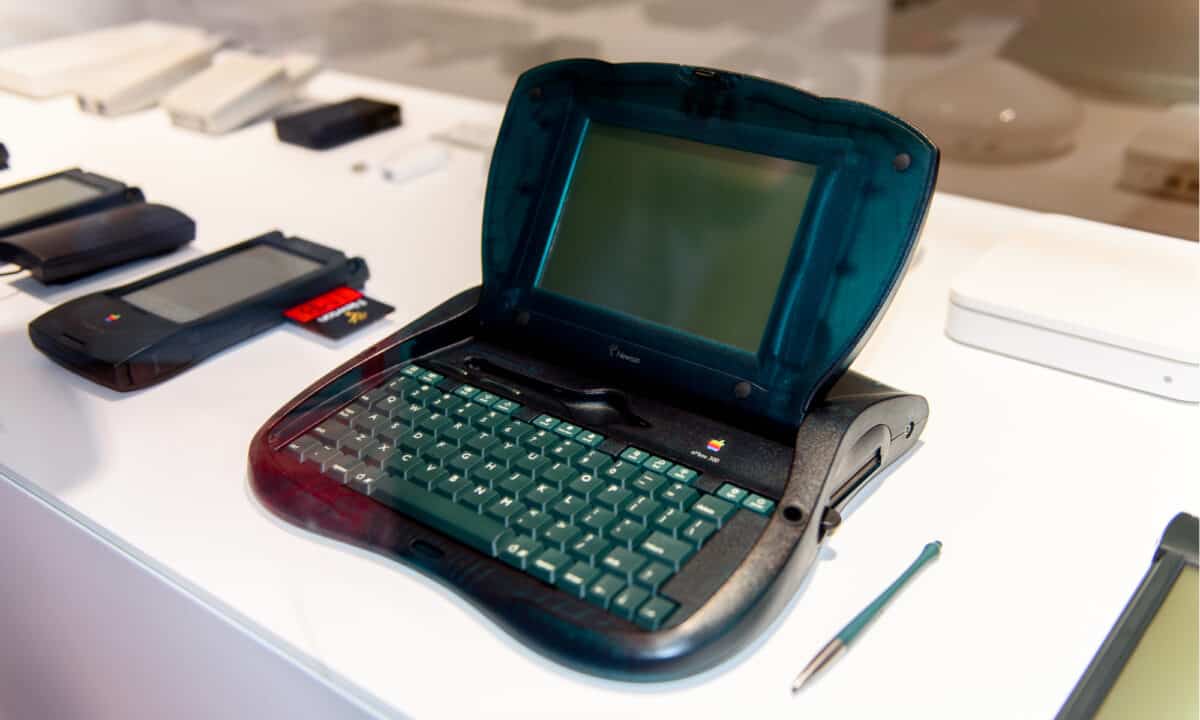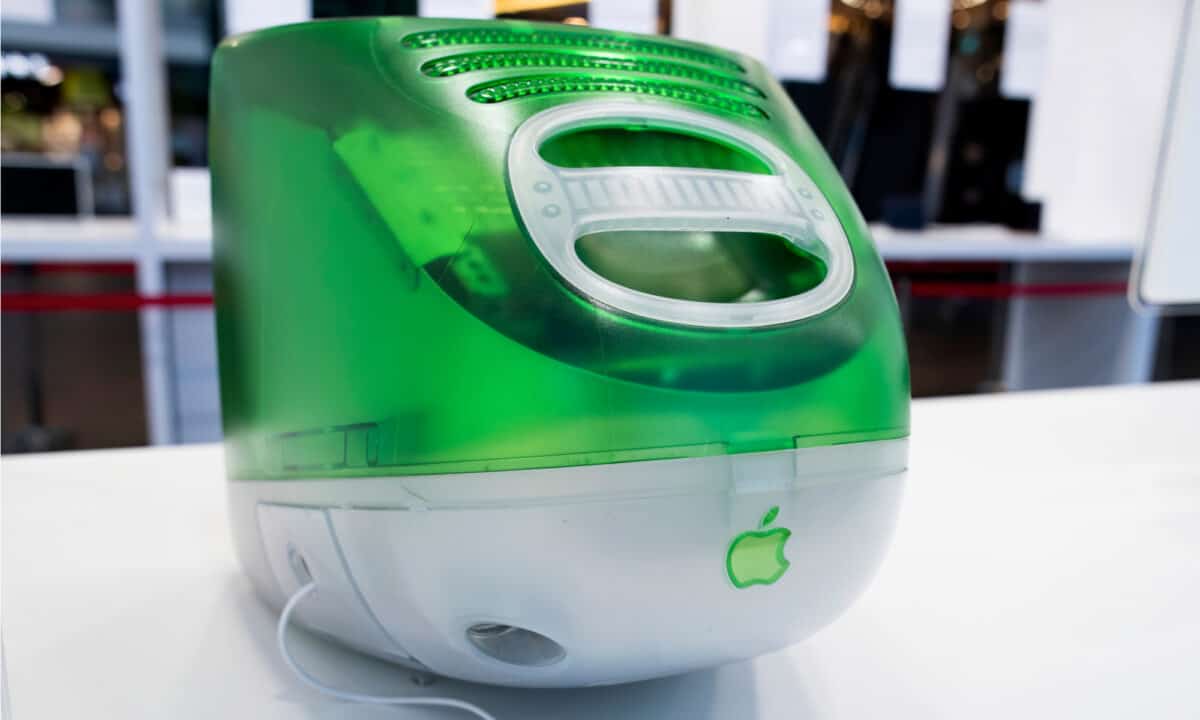As the 1980s gave way to the 1990s, it was clear that the industry’s focus was shifting away from bringing the computer into the home. Instead, there was a newfound determination to make the personal computer more portable and more powerful. For much of the previous decade, the home computer wasn’t necessarily capable of the most advanced computational tasks. By the end of the ‘80s, it was evident the 1990s were going to bring advancements in features, design, speed, storage, and price that would make this technology more incredible and enticing than ever. The timeline below will outline some of the most important facts and the most notable advancements in the history of computers throughout the 1990s.
1990
New Decade, New DOS
Regardless of brands, from Windows to Apple, the late ‘80s and early 1990s saw an increasing amount of attention being paid to a computer’s DOS (or disk operating system). The first couple of tries Windows made weren’t necessarily the most successful, but with Windows 3.0, the company’s streak of so-so reception toward its DOS was over now. 1990 saw the introduction of Windows 3.0 and the spread of OS/2 from IBM, both of which presented Apple with a serious threat: Keep up with the other guys or face falling behind.
Welcome to Microsoft Office
After initially announcing the suite of programs in 1988, Microsoft officially released Microsoft Office in late 1990. While it’s hard to imagine a computer without this software bundle today, the general public didn’t get access to Microsoft Word, Excel, or PowerPoint until this point in the history of computers.
1991
Death of the DOS?
In 1991, the biggest brands in the game continued to wrangle with the DOS. The question lingered: Microsoft’s DOS or IBM’s OS? Which was better? This question only grew more complicated as Windows simultaneously pushed its own Windows 3.0 DOS and its collaboration with IBM, the OS/2. In June 1991, Bill Gates declared “the DOS is dead,” seemingly clearing up the debate with just a few words, only for Gates to drop development of the OS/2 in favor of Windows’s upcoming DOS 5.
Linux Comes to Life
While operating systems, the Internet, and the World Wide Web were still in their infancy, there was already a push to improve the systems actively being built at the time. In 1991, Linus Torvalds, a Finnish student, began work on Linux. An open-source operating system still used today, Torvalds’s Linux kernel was born from a desire to make computing more affordable, accessible, and powerful all in one.
Powering Up the PowerBook

©Alena Veasey/Shutterstock.com
Even though Apple’s Macintosh Portable was a triumph of design, speed, and technology, its price tag made it less than successful to the general public. Thankfully, the Apple PowerBooks introduced in 1991 were able to amend some of the slight damage to the brand’s reputation. They came with a trackball instead of a mouse, an internal floppy disk drive, and even a couple of palm rests — all innovative features that would soon become staples of laptop computers throughout the 1990s and into the 2000s.
1992
Bring On the 64 Bits
Up until 1992, 32-bit microprocessors had been the standard. However, the Alpha changed all that. A 64-bit RISC (or reduced instruction set computer) microprocessor, the Alpha soon found itself a key component of several new workstations, supercomputers, and servers the world over. It didn’t take long for Compaq and Intel to snatch up the technology and make their own improvements to it, as well.
Take a JPEG, It’ll Last Longer
In the early years of the personal computer, there weren’t many standards established yet. For example, it wasn’t until the Joint Photographic Expert Group — a.k.a. JPEG — established the standard for what digital images should be. Using the name of their group, the JPEG established the compression and quality standards for virtual images.
The SSD Emerges
Hard disk drives had become the industry standard by this point in 1992, but it came with pros and cons: as the personal computer got smaller and the most popular computers got more portable, the hard disk drive was a little too heavy to be practical anymore. Thankfully, SunDisk — which we now know as SanDisk — presented IBM with the SSD (or solid-state disk) to try and amend this problem. Using non-volatile memory chips instead of a traditional hard disk drive’s spinning disks, the SSD and its flash memory made for a very exciting new storage option.
Thinking About the ThinkPad
To compete with Apple’s PowerBook, IBM released its own take on the lightweight and portable personal computer: The ThinkPad. Known for its distinctive design inspired by the look of a lunchbox, the ThinkPad also features a now-iconic red TrackPoint in the center of the keyboard.
1993
A Commercialized Internet
Today, the price of the Internet doesn’t come cheap. However, at this point in the history of the World Wide Web, there weren’t many Internet service providers around to sell it to people. That changed in 1993 when commercial internet service providers began to emerge and started selling the web to homes and businesses. The Internet officially had a price, and it would stay this way from this point forward.
HTML Hits
HTML — or HyperText Markup Language — is now the standard for the document markup language, but here are the facts: before HTML, there was no standard for a website’s fonts, sizes, colors, or images. With the arrival of HyperText, websites could now branch out beyond the basic web design of the past and move toward a HyperText-fueled future of innovative web design.
The Debut of the MP3
A year after the JPEG became the standard for virtual images, the MP3 became the standard for virtual sounds. Used to play music on PCs and store audio on portable digital players, the MP3 file format was undoubtedly a major development.
Doom Isn’t Doomed
Computer games are as popular as any console games today, but in 1993, the jury was still out on whether or not computer games would stick up against the popularity of console gaming. However, with the hugely successful release of Doom in December of 1993, computer games made a major statement: the desktop computer was officially a legitimate option for video gaming, regardless of its pros and cons.
Public Display of Advancements

©Anton_Ivanov/Shutterstock.com
It doesn’t get any smaller than the palm of the hand, does it? In the continued push to bring the speed, the storage, and the capabilities of the desktop computer to the hustle and bustle of the working world, Apple created the Newton: a personal data assistant (or PDA) that boasted many convenient productivity tools including software that could recognize handwriting and translate it to text. It was pretty buggy and had many pros and cons, but it served as the first PDA and an early step toward the features of a smartphone.
1994
PC: Popularity Contest
It was years in the making, but 1994 finally saw a true boom in popular computers and the Internet alike. From the newfound success of computer games to the popularization of the Internet to the ever-increasing interest in owning a desktop computer, it was evident that the popularity of the home computer was not just a product of the time. It was a new way of life.
1995
Battle of the Browsers
As the Internet continued to grow increasingly popular, it was only a matter of time before the biggest names in tech started vying for ownership of it. This is the root of the war that broke out between Microsoft and Netscape in 1995: Would people prefer Microsoft’s Internet Explorer, or would they rather use Netscape’s Navigator? Both browsers were incredibly popular on home computers and desktops across the nation, and, as it turns out, neither one really lost the battle. While Navigator went away and eventually became the basis for Firefox, both this browser and Internet Explorer still exist today.
Dawn of the DVD
The CD was a major development in the 1980s, and the DVD was just as huge in the 1990s. Far surpassing the storage capabilities of the CD, the DVD — or Digital Video Disc — was quickly accepted as the new standard for reading and writing audio video in 1995. The film industry and consumers alike were enamored by the DVD, especially considering how interactive and high-quality they were compared to the VHS or the CD.
Speaking My Programming Language
From the development of JavaScript to the release of Windows 95, 1995 saw the programming language enjoy one of its best and most successful years on record. Both JavaScript and Windows 95 showed the world how important a solid and advanced programming language could be. Across the most popular computers on the market, both JavaScript and Windows 95 enjoyed great success.
1996
Call Me
With the release of Apple’s Newton and IBM’s Simon, it was evident that many of the world’s smartest technological minds were thinking about how to bring the power of the computer into the palm of people’s hands. Then, in 1996, the release of the Nokia 9000 was the world’s biggest step toward the smartphone thus far. The thing was big but powerful, complete with its CPU, 8 MB of memory, and even its own operating system.
Getting Graphic
As computer games continued to grow more and more popular (and, concurrently, more and more advanced), there became an increasingly obvious need for better graphics. 3Dfx answered the call by developing and releasing the Voodoo graphics chip. While 3Dfx was eventually sold to Nvidia, the company’s graphics chip was an unbelievable step forward in the world of computer graphics. Grand Theft Auto — released in 1997 — was one of the earliest games to show off the benefits of improved graphics.
Hotmail Hits the Web
Despite eventually being bought and repurposed by Microsoft’s Outlook, Hotmail was a big deal when it hit the Internet in 1996. Created to bring people freedom from the control of Internet service providers, the popular email service made a serious splash at the time.
1997
Apple Falls Financially
We think of Apple as one of the dominant technology providers of the modern-day, but here are the facts: The company was in serious financial trouble in 1997, and, after nearly two years of straight losses, they needed help from an unexpected source, Microsoft. The rival bought up 100,000 shares of Apple stock (worth $150 million at the time), helping the company get some stable footing so long as they dropped their lawsuit against Microsoft.
1998
Introducing the iMac

©Karolis Kavolelis/Shutterstock.com
Just one year after facing serious hardship and receiving a helping hand from Microsoft, Apple released the iMac: a groundbreaking all-in-one desktop computer encased in iconic colorful plastic that singlehandedly brought the company out of the red and into the green. With Steve Jobs now back at the company as well, Apple was officially safe again.
1999
The Force of Geforce
As suggested by the success of the 3Dfx Voodoo chip, computer graphics were headed toward a serious level-up. This came to fruition with the release of Nvidia’s Geforce 256, the world’s first Graphics Processor Unit (GPU) available at the consumer level. Getting in right under the wire of the new decade and the millennium ahead, Nvidia had effectively set the stage for a whole new world of technological advancement.
Welcome, Wi-Fi
1999 also saw the popularization of a new way to connect to the Internet. As it turns out, “IEEE 802.11b” just isn’t as catchy or as snappy as Wi-Fi. Offering Internet connectivity without the hassle of cables or wires, Wi-Fi used short-range radio networking to revolutionize the way we get online.